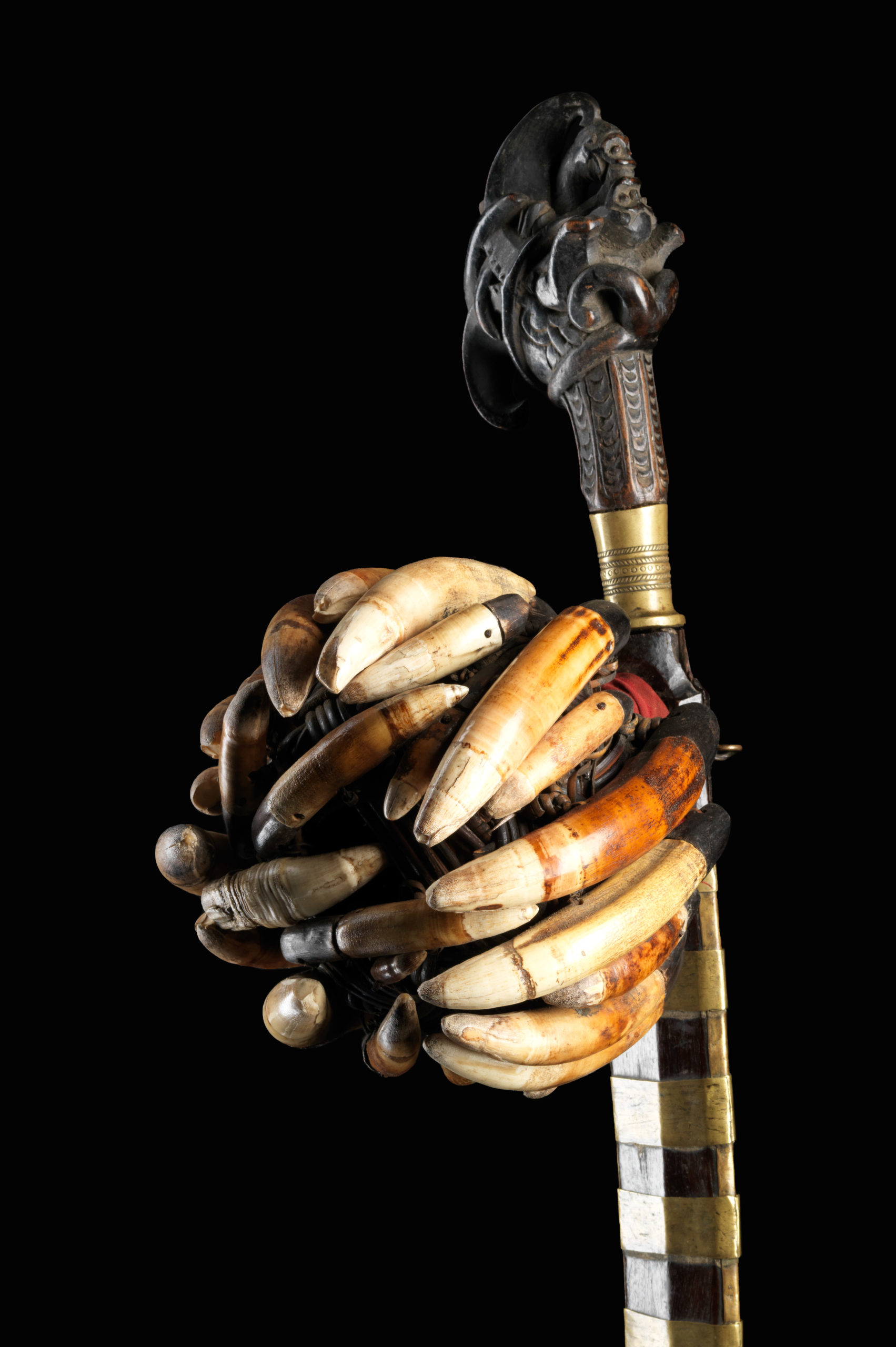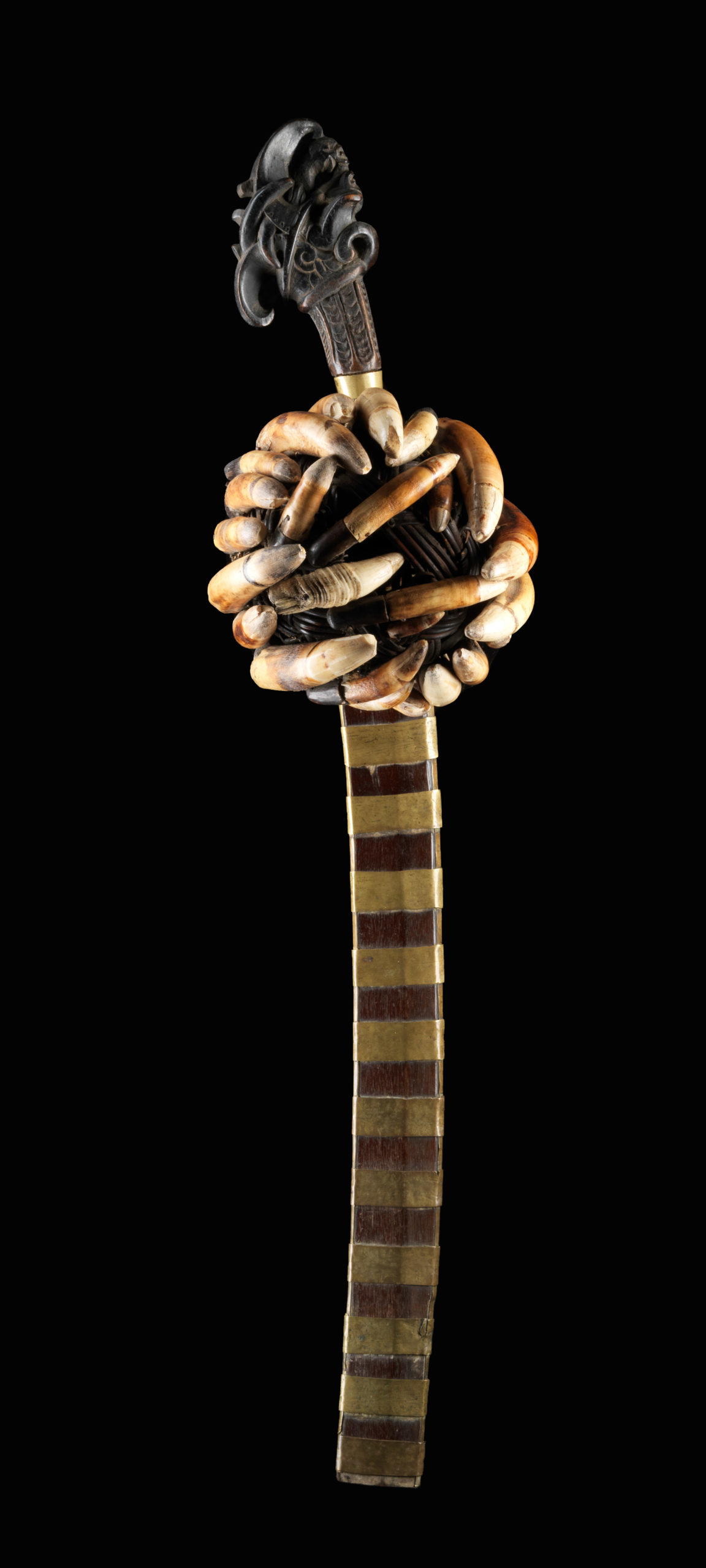Sword „balato“
The wooden handle has a large knob and is black patinated. The pommel represents the head of the lasara, an “underworld mythical creature” in the sense of the singa of the Batak, the makkara or the naga pahóda, which has a ripped mouth and oversized fangs.
The aristocracy of Nias illustrates and documents their authority by inheriting or making – prestige objects made of metal. Above all, these are golden headdresses and weapons such as, above all, the balato tologu, the sword of high-ranking warriors, and neck and arm jewellery. These objects establish the connection to the ancestors. The concept of the pusaka, the sacred heirloom, which is a direct reference to the ethereal sphere, is particularly evident here. Blacksmiths in southern Nias are mostly noblemen or descend from noblemen. The steel seems to have always been imported, but the blades were made locally and the basic techniques of refining and hardening were well known. The forms are endemic, although Sumatran influences are unmistakable. Precisely because the blacksmith intervenes directly in or cements the social system by producing objects of rank, his trade is adequate to the nobility and his work is indebted to the nobility.
The sheaths of South Ninja swords are usually decorated with amulet baskets, ragö or raga ifo boaya, “crocodile’s vessel”. The baskets, which are usually woven from coarse rattan, contain red cloth strips, teeth (also of human origin), jimat stones, figurines and others and are covered with teeth of tigers or crocodiles.
| Object | Sword „balato“ |
| Culture | South Nias |
| Time | Around 1900 |
| Dimensions | Length 74 cm |
| Material | Steel, wood, brass, textile, rattan, crocodile teeth |









